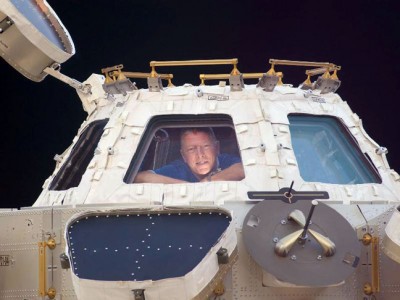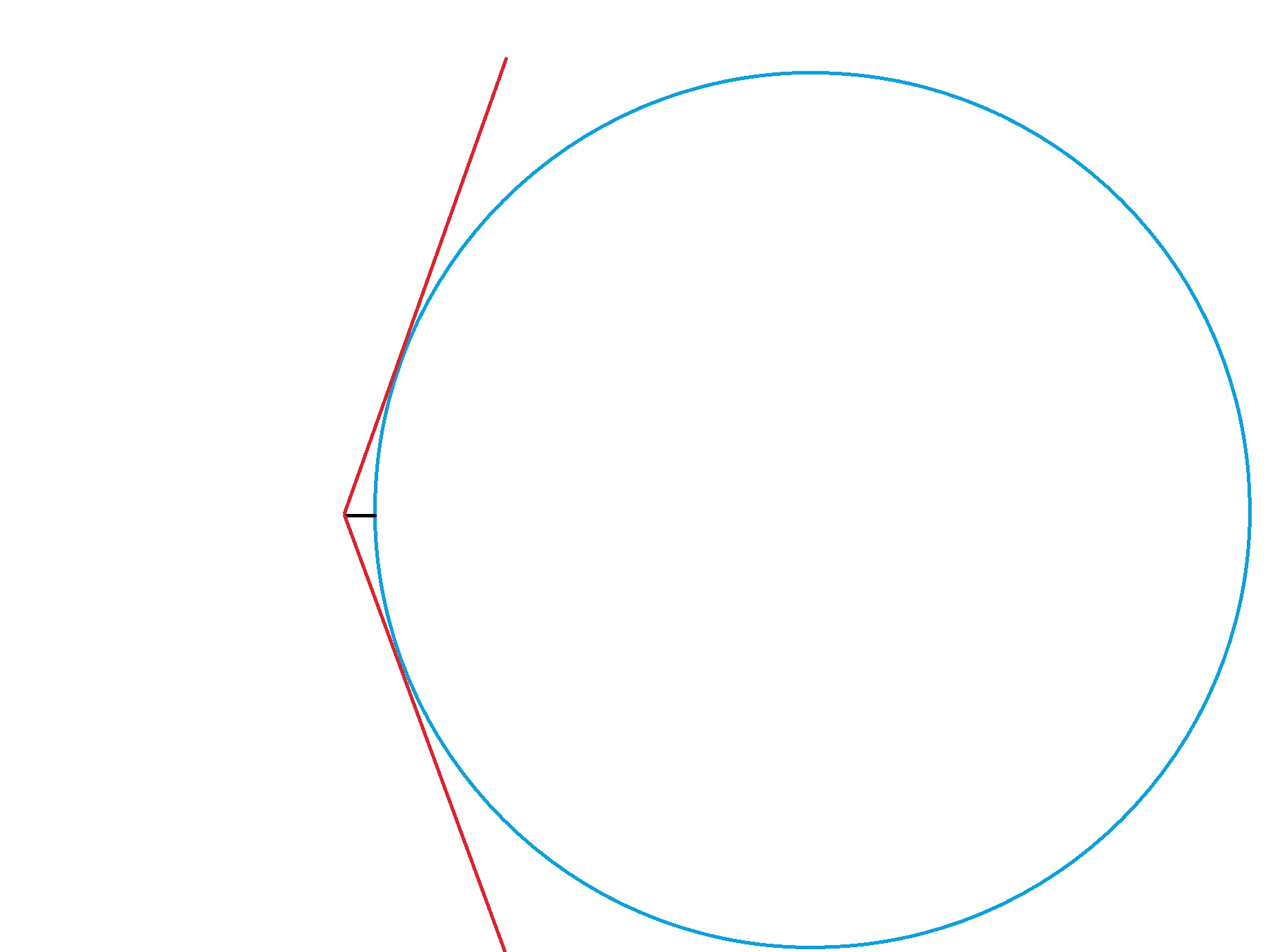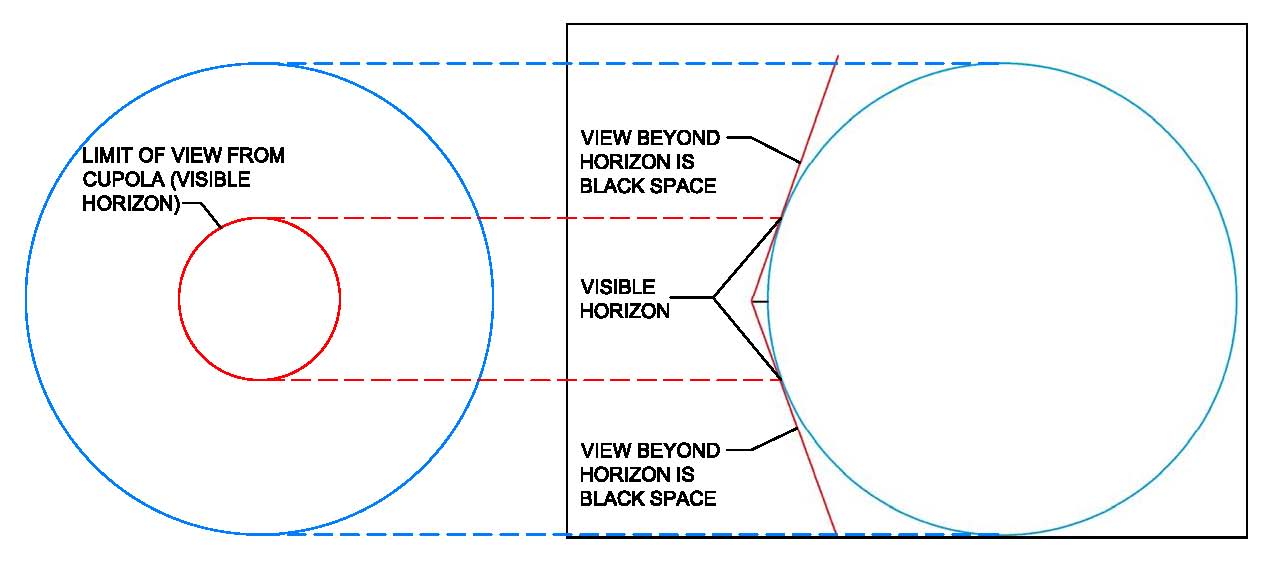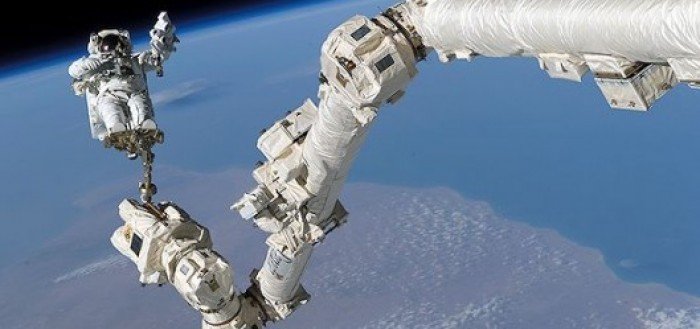It looks like you're using an Ad Blocker.
Please white-list or disable AboveTopSecret.com in your ad-blocking tool.
Thank you.
Some features of ATS will be disabled while you continue to use an ad-blocker.
share:
It looks as though this hinges on the distance of the lens from the viewport.
His point makes sense IF it was a significant distance back, and no horizon could be seen in the side windows.
His point makes sense IF it was a significant distance back, and no horizon could be seen in the side windows.
Here's an image taken from 1,25,000 ft.....
And the ISS is at 400 km! The images from the ISS in the OP seem ok except for the fact that the 'horizon' should have been hazy due to the atmosphere like in the pic above or like this....
And the ISS is at 400 km! The images from the ISS in the OP seem ok except for the fact that the 'horizon' should have been hazy due to the atmosphere like in the pic above or like this....
edit on 26-3-2017 by OrionHunterX because: (no reason given)
a reply to: WaxingGibbons
You really can't grasp how the picture was taken. Educate yourself before you make more of a fool of yourself
You really can't grasp how the picture was taken. Educate yourself before you make more of a fool of yourself
originally posted by: WaxingGibbons
a reply to: TarzanBeta
I don't own such cameras, you are the professional here.
What about this pic.
It shows the curvature of the Earth matching up to the curvature of the 2m diameter window at an 400 km altitude. Obviously not a fish eye lense.
So how can they match up? At that distance it is impossible to have them match up.
The answer to this is very simple.... the side windows are NOT curved, they are both being distorted by the fisheye lens in the same manner.
This is what a straight on view out of the cupola with a normal lens looks like. Note the side window edges are all straight, no curvature at all.

If you discount a fisheye lens being used, how do you explain the difference in the side windows in the pictures that you yourself provided earlier. Some have straight edges and some are curved. Do you have an alternate explanation for this?
edit on 26-3-2017 by Donner because: (no reason given)
edit on 26-3-2017 by Donner because: (no reason given)
a reply to: WaxingGibbons
the design of the cupola is a "fisheye" lens as a whole, Period, instead of one lens it is many but creates the refractory illusion of one lens. sorry, you cannot see it as such, and it's ok because I think you are fake so prove you are real. (I also think you have been on ATS before, and that this is not your first time here.)
the design of the cupola is a "fisheye" lens as a whole, Period, instead of one lens it is many but creates the refractory illusion of one lens. sorry, you cannot see it as such, and it's ok because I think you are fake so prove you are real. (I also think you have been on ATS before, and that this is not your first time here.)
With all this talk about fisheye I wanted to test something out.
Here's one of the original pics posted.
Here's the same pic after I ran a fisheye correction filter on it. (In this case a correction for a Gopro Hero 4 camera)
While no doubt not corrected for the right camera (I have no idea what the image was taken with) it will hopefully give OP and others an idea of what others are trying to explain when they talk about fisheye distortion. As the 'corrected' image looks more like what one expects from LEO images. Hope this makes a bit more sense for them.
e.g fish eye adds curvature. correcting it makes things appear as they should and less spherical.
Here's one of the original pics posted.
Here's the same pic after I ran a fisheye correction filter on it. (In this case a correction for a Gopro Hero 4 camera)
While no doubt not corrected for the right camera (I have no idea what the image was taken with) it will hopefully give OP and others an idea of what others are trying to explain when they talk about fisheye distortion. As the 'corrected' image looks more like what one expects from LEO images. Hope this makes a bit more sense for them.
e.g fish eye adds curvature. correcting it makes things appear as they should and less spherical.
edit on 26-3-2017 by AtomicKangaroo because: stuff
originally posted by: WaxingGibbons
a reply to: Zaphod58
Nonsense.
You can see the frame of the window, and in what you claim is the frame we see a solar panel that is on the outside, obviously.
The blackness around the Earth cannot be the frame.....
Also note that solar panel is curved, which would be clearer in decent sized pictures. Indicating further 'fish eye' effect as many have been explaining to you.
originally posted by: WaxingGibbons
a reply to: mikell
The fact that it is a dome does not change the fact that from a camera distance of 2 m from it, your view is still restricted by the 2m diameter......regardless of your lense.
And again, there simply is no line of sight to get the entire Earth from that altitude.
And again, according to NASA themselves it is impossible to get the entire Earth from lower Earth orbit. Did you read my OP?
And I think we have established that thee pics only show a portion of Earth, the question is now why is it rounded off looking like a sphere with space around it.
Fake.
You see "the entire earth" if you have your nose 2 feet off the ground. The "entire earth" that appears in these photos are caused by the lens, in effect making it seem like the viewer is farther from the earth than is the case. If you had "poked your head out the window" at that altitude, you would have seen the same edge that the lens does - but it's the lens that makes it seem as if you have this "tiny earth" right in front of you.
Btw - You never see the entire earth. At least half of the earth can't be seen from a single point in space - no matter how near or far you are.
a reply to: WaxingGibbons
The OP seems to be having trouble grasping the geometry of it, so I thought this explanation (with a diagram) would be helpful.
First of all, the image in the OP is NOT a full Earth image. It is only showing the part of the Earth that is visible from the copula, and presenting that image as viewed through a fish-eye lens.
Here is a similar image, just not as high up as the ISS. The ISS his high enough to see farther to the horizon (but still not be able to see the full disk), and the part above the horizon is black space rather than bright sky...
...HOWEVER, the concept is still exactly the same as the images in the OP:
 Image Source:
Image Source:
markmarano.com...
The copula DOES provide a 360-degree view of the Earth because of the way the side windows are angled, is in the image below:

However, a 360-degree view is NOT the same as saying that they would have a view of the entire full disk of the Earth. That's because they (as the OP rightfully said) are orbiting too low to be able to see the full disk. Just like in the 360 degree fish-eye image of trees above, the cupola can see 360 degrees around them, but the Earth itself gets in the way of seeing a full disk of the Earth, as the OP showed in his diagram:

But the limits of what they would see would be the same distance in every direction, and when you have a 360 degree view of something to the same distance in every direction, the limits of what you would be able to see would transcribe a circle, as in my diagram below:

Put that together with a fish-eye lens that is able to show you that circular limit of view in a single image, and what you end up with is the images in the OP -- which are not fake.
What's different in the image from the cupola as opposed to the image fisheye image of the trees and sky above is that instead of see in a portion of the wooded ground around us stretching to the horizon, we see a portion of the Earth around us stretching to the horizon; and instead of the bright sky above the horizon, we see black space above the horizon.
I hope this helps the OP figure this out.
The OP seems to be having trouble grasping the geometry of it, so I thought this explanation (with a diagram) would be helpful.
First of all, the image in the OP is NOT a full Earth image. It is only showing the part of the Earth that is visible from the copula, and presenting that image as viewed through a fish-eye lens.
Here is a similar image, just not as high up as the ISS. The ISS his high enough to see farther to the horizon (but still not be able to see the full disk), and the part above the horizon is black space rather than bright sky...
...HOWEVER, the concept is still exactly the same as the images in the OP:

markmarano.com...
The copula DOES provide a 360-degree view of the Earth because of the way the side windows are angled, is in the image below:

However, a 360-degree view is NOT the same as saying that they would have a view of the entire full disk of the Earth. That's because they (as the OP rightfully said) are orbiting too low to be able to see the full disk. Just like in the 360 degree fish-eye image of trees above, the cupola can see 360 degrees around them, but the Earth itself gets in the way of seeing a full disk of the Earth, as the OP showed in his diagram:

But the limits of what they would see would be the same distance in every direction, and when you have a 360 degree view of something to the same distance in every direction, the limits of what you would be able to see would transcribe a circle, as in my diagram below:

Put that together with a fish-eye lens that is able to show you that circular limit of view in a single image, and what you end up with is the images in the OP -- which are not fake.
What's different in the image from the cupola as opposed to the image fisheye image of the trees and sky above is that instead of see in a portion of the wooded ground around us stretching to the horizon, we see a portion of the Earth around us stretching to the horizon; and instead of the bright sky above the horizon, we see black space above the horizon.
I hope this helps the OP figure this out.
edit on 26/3/2017 by Soylent Green Is People because: (no reason given)
OP seems to think if you're not far enough away to see the entire hemisphere, the earth should take up your entire field of view. This is hilarious,
because if that were true none of us would be able to see the horizon down here on the surface. No matter how close you are to a sphere, if you have a
wide enough field of view you can still see a horizon, and in the case of the earth, no matter how close you are to it you can still see space after
the edge (horizon) if your field of view is wide enough.
He keeps insisting that what lens was used is irrelevant, when that's simply not true. Different lenses have different fields of view. If you're using a lens with a very narrow FOV, say 10 degrees, yeah you will only be able to see a portion of the earth and not the horizon and what's past the horizon (space). But if you have a wide enough FOV lens, you will be able to see the horizon and indeed past it. See below.
Simple experiment: go outside, tilt your head so you're facing straight down, then move your eyes as far as you can over to one side or the other with your head still facing down. You can see the horizon, even as close as you are to the earth, because your field of view is wide enough. Most humans have around 135 degrees. You can't see the "whole earth" but you can see a certain angular size of it, just as the ISS can see an even larger angular size of it, although still not the "whole earth". Being far enough away to see the "whole earth" isn't required to be able to see the horizon and the space that's past it. If your theory was correct, with your head (camera) facing straight down, your lens (eyes) shouldn't be able to see the "whole earth with space around it" since you're not far enough away. But you can, because that's not how it works. You're just wrong.
"Whole earth" is incorrect terminology by the way. You can't see the whole earth no matter how far away you get. At most you can only see about half of it.
He keeps insisting that what lens was used is irrelevant, when that's simply not true. Different lenses have different fields of view. If you're using a lens with a very narrow FOV, say 10 degrees, yeah you will only be able to see a portion of the earth and not the horizon and what's past the horizon (space). But if you have a wide enough FOV lens, you will be able to see the horizon and indeed past it. See below.
Simple experiment: go outside, tilt your head so you're facing straight down, then move your eyes as far as you can over to one side or the other with your head still facing down. You can see the horizon, even as close as you are to the earth, because your field of view is wide enough. Most humans have around 135 degrees. You can't see the "whole earth" but you can see a certain angular size of it, just as the ISS can see an even larger angular size of it, although still not the "whole earth". Being far enough away to see the "whole earth" isn't required to be able to see the horizon and the space that's past it. If your theory was correct, with your head (camera) facing straight down, your lens (eyes) shouldn't be able to see the "whole earth with space around it" since you're not far enough away. But you can, because that's not how it works. You're just wrong.
"Whole earth" is incorrect terminology by the way. You can't see the whole earth no matter how far away you get. At most you can only see about half of it.
edit on 26 3 17 by face23785 because: fixed a few spelling errors, probably still some
a reply to: stonerwilliam
Well, hopefully he got a bit of understanding of the errors in his logic and errors in his critical thinking before he left.
Well, hopefully he got a bit of understanding of the errors in his logic and errors in his critical thinking before he left.
edit on 26/3/2017 by Soylent Green Is People because: (no reason given)
a reply to: WaxingGibbons
it looks like your drawing is bang on with the pictures, if i were standing on the point and looked along the lines you drew
you would be looking at a globe, and from that POV it would seem like the whole globe, but going by your drawing it looks like you are nt seeing as much as you think, basically you just debunked yourself
it looks like your drawing is bang on with the pictures, if i were standing on the point and looked along the lines you drew
you would be looking at a globe, and from that POV it would seem like the whole globe, but going by your drawing it looks like you are nt seeing as much as you think, basically you just debunked yourself
originally posted by: WaxingGibbons
originally posted by: DrWily
a reply to: NAVSEA
Finally... Indisputable proof. Great example BTW. Is the lens actually touching the basketball?
Well this diplay proves something allright.....
Yes, guys, with a 3000 km diameter ACME lens on board the ISS, it is possible.....bravo!
Look up, an anvil!
With a wide angle lens I can photograph an entire building, bottom to top, while being very close. And that doesn't require the lens to be hundreds of meters big. There isn't a single valid point you've made in the whole thread.
You probably lack the basic knowledge of optics to understand all this, I suggest you get your hands on a camera someday, or just educate yourself on photography. Really, you have dismissed even the simplest explanation people tried to form to get you to understand. Your ignorance - which you without a doubt demonstrated - is ok, you can't be an expert on all topics, and sometimes it's normal to just "have missed" basic pieces of knowledge, but your behaviour during this whole discussion might lead some people to think you don't want to learn and never will, and they will leave you with your "oh boy, I'm so right" monologue. Please disregard this message if you are doing this out of pure malice, sometimes it's hard to tell if an user doesn't understand or pretends not to understand.
a reply to: Soylent Green Is People
10/10 would read again. Exactly what I was waiting for someone to say.
10/10 would read again. Exactly what I was waiting for someone to say.
originally posted by: Soylent Green Is People
a reply to: stonerwilliam
Well, hopefully he got a bit of understanding of the errors in his logic and errors in his critical thinking before he left.
I think a lot of people got an exercise in critical thinking also, but sometimes knowledge is missing
and this is the key. Taking it to a forum is a good idea even if you do lose a little face.
2 brains are bette than one they say..
Limbo
originally posted by: WaxingGibbons
And we have already established that it doesn't show the entire Earth.
The questions is now why is it rounded off looking like a sphere with space around it?
My favourite thing in this thread is that you keep asking a question, while posting a picture that you created yourself that answers your own question.
What do you see when you, as a person standing on a hill or tall building, look at the horizon on a clear night? You see... space. That doesn't mean you are somehow able to see the entirety of the globe - in fact, you can probably see only the tiniest of sections of the globe, but still you can turn 360 degrees and see "space around the edges".
Look at your picture again. Where does the red line point? Out into... space.
Why would we believe anything released from NASA? They have literally faked everything. snorkels in space gtfo
originally posted by: darkstar57
a reply to: DrWily
both waxing gibbous and DrWily show 24/3/2017 registration. somethings up here, i thought registration rules prevented this sort of thing. time for the moderators to do a bit of explaining. Or maybe they are in on it... in any event, this really reduces my desire to visit ATS
In on what exactly...it is posts like yours here which are severely in need of removal.
new topics
-
US food sources declining becoming non edible .
Social Issues and Civil Unrest: 1 hours ago -
Journalism Against Judaism
Middle East Issues: 7 hours ago -
Bibi’s Dilemma
Middle East Issues: 11 hours ago
top topics
-
Bibi’s Dilemma
Middle East Issues: 11 hours ago, 11 flags -
Proof of Cleptocracy
US Political Madness: 15 hours ago, 10 flags -
Journalism Against Judaism
Middle East Issues: 7 hours ago, 4 flags -
US food sources declining becoming non edible .
Social Issues and Civil Unrest: 1 hours ago, 1 flags
active topics
-
Murder Suicide Investigation Still Active 4 months later?
Other Current Events • 3 • : worldstarcountry -
Israeli strikes on southern Gaza city of Rafah kill 22, mostly children, as US advances aid package
Middle East Issues • 202 • : AlongCameaSpider -
New House GOP Bill To Send Pro Hamas College Law Breakers to Gaza for 6 Months
Social Issues and Civil Unrest • 124 • : CriticalStinker -
US food sources declining becoming non edible .
Social Issues and Civil Unrest • 12 • : Irishhaf -
Boy Scouts to be renamed next year
Other Current Events • 185 • : AlongCameaSpider -
Time Traveler Caught on Camera?
Paranormal Studies • 39 • : AlongCameaSpider -
-@TH3WH17ERABB17- -Q- ---TIME TO SHOW THE WORLD--- -Part- --44--
Dissecting Disinformation • 912 • : daskakik -
Marjorie Taylor Greene Files Motion to Vacate Speaker Mike Johnson
US Political Madness • 77 • : Zanti Misfit -
Gov Kristi Noem Shot and Killed "Less Than Worthless Dog" and a 'Smelly Goat
2024 Elections • 179 • : AlongCameaSpider -
Candidate TRUMP Now Has Crazy Judge JUAN MERCHAN After Him - The Stormy Daniels Hush-Money Case.
Political Conspiracies • 1449 • : Zanti Misfit






